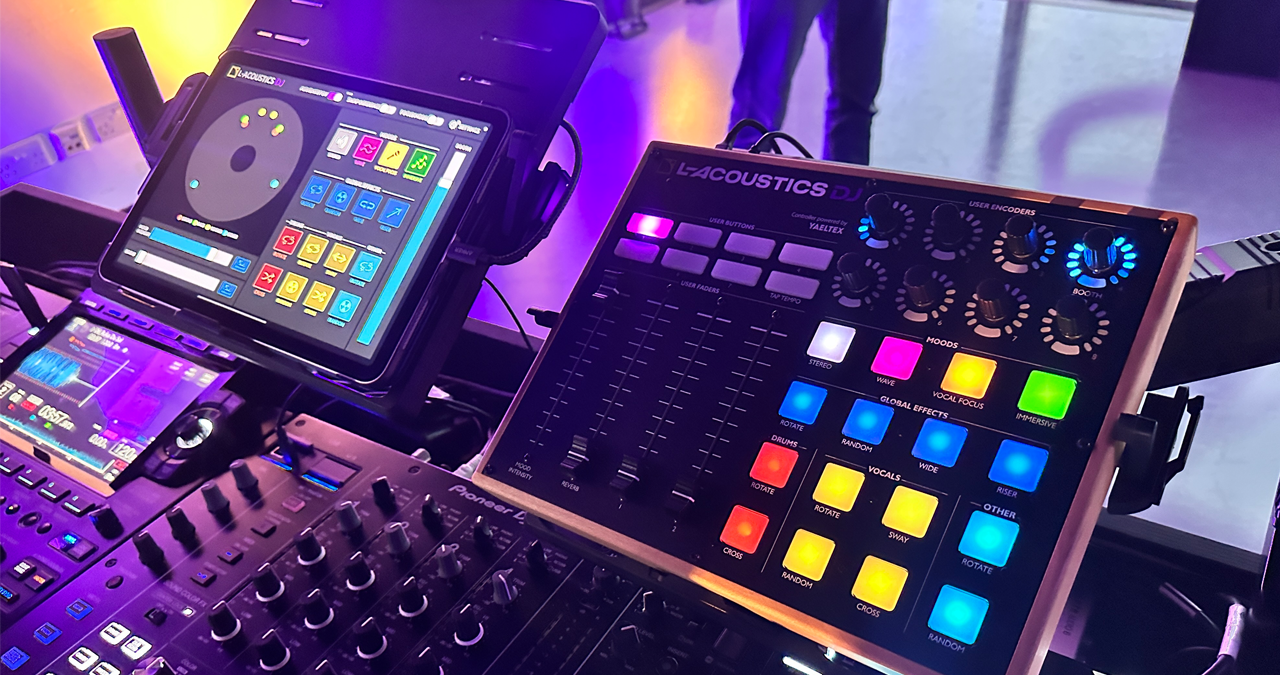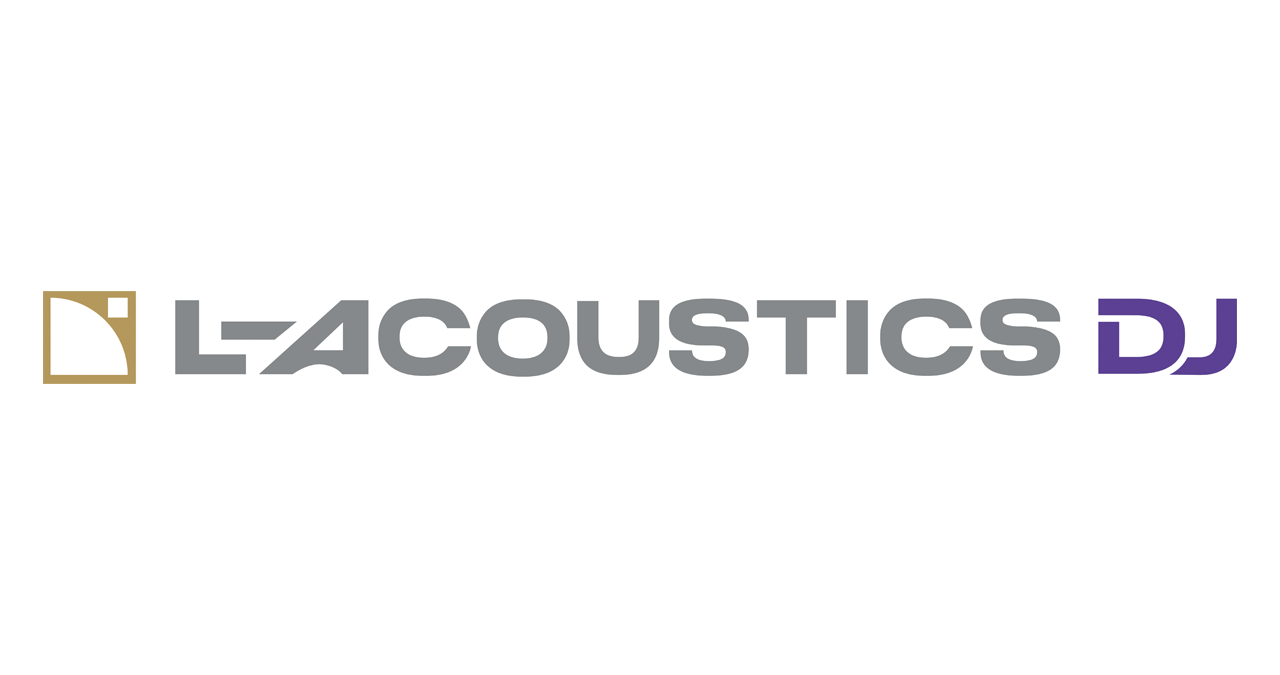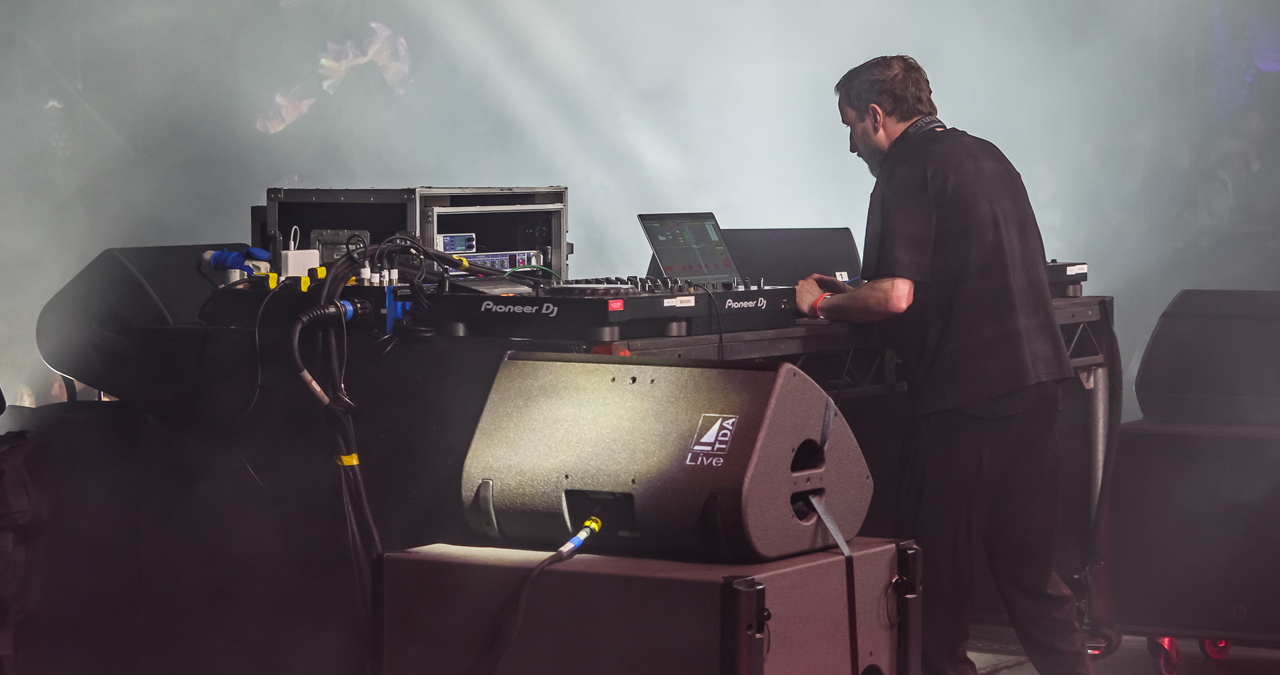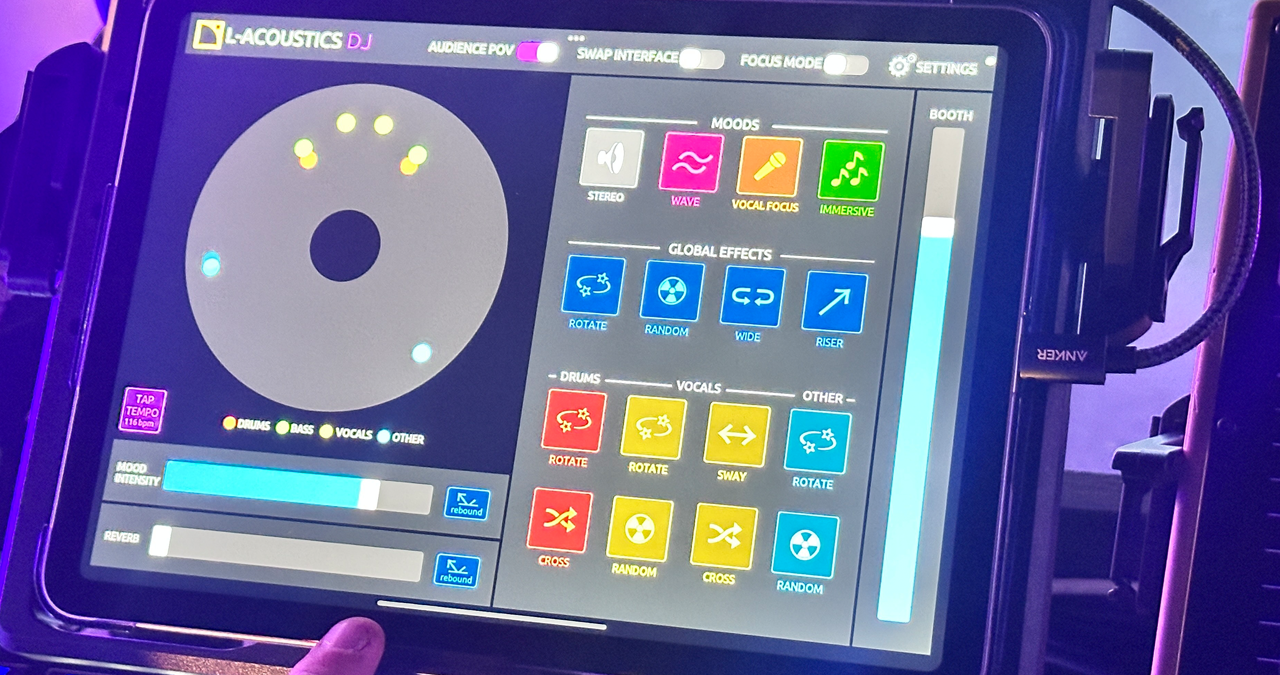L-Acoustics’ new DJ-aimed stem separation software can pull apart any stereo source and fire its elements across a 360 soundstage in the blink of an eye
Could this astounding tech be the cornerstone of future immersive DJ live set-ups?

We weren’t entirely sure what to expect when arriving at L-Acoustics keynote at London’s iconic Roundhouse last night. The globally-respected French loudspeaker company has been renowned for its stellar line array speaker systems and all-purpose live sound solutions for decades. But, prior to the event, the company teased the intriguing prospect of something that might be up the alley of music-making and performance-angled outlets…
At the conclusion of the keynote, the company - true to its word - finally unveiled its very first artist/DJ-focussed product: L-Acoustics DJ.
Don't be put-off by the rather flat branding - what this software can do could prove a massive leap forward for DJs and (ultimately) live performers of all stripes who want to engage more fluidly with the spatial audio world.
Ostensibly an iPad app running on the company’s patented L-ISA engine, L-Acoustics DJ allows DJs and live performers the ability to instantly stem separate any stereo source into four distinct part - Drums, Bass, Vocals and Other.
There’s no glitching with the resulting stems, and no discernable quality-loss or signal degradation and - because of the proven heft of L-Acoustics’ processing - no lengthy wait time for the stems to be extracted.
It all happens literally within seconds (if that).

But instantaneous stem separation isn’t all it can do. Being a live sound-oriented company, said stems can then be bounced instantly to any and all speakers with a venue or performance space, cutting out the need for time-consuming spatial mix sessions.
“There's no need to pre-load tracks, nothing to scan in advance, and it works with any type of source, from vinyl to digital, from CDJs to Ableton,” said L-Acoustics’ Director of Product Management Scott Sugden during the keynote. “To give the artist control - we've developed a software space visualiser.”
The software features global and per-stem effects, such as moving every element around the room in orbit, pushing the vocal stem forward, pushing the drums forward or creating tension prior to a drop.
This was ably demonstrated by the ever-awesome Max Cooper, who has been involved in the behind-the-scenes development process of the software.
Hearing his complex mixes swallow up and gallop across the Roundhouse was an unexpected thrill, and showcased the potential of using spatial audio as a spontaneous creative tool.
Want all the hottest music and gear news, reviews, deals, features and more, direct to your inbox? Sign up here.

Getting hands-on with this ourselves following the keynote, the first thing that struck us was the simplicity of the software's UI. Particularly when you bear in mind L-Acoustics' professionally-angled L-ISA software and its position within the live sound industry.
Before long we were holding sonic court (or at least… in our heads we were), trialling different effects and marvelling at the fidelity of the stems.
The effect options are represented by strips of colourful blocks on the right hand-side of the interface. At the top, the Moods strip allows users to impart general spatial mix presets for any source, then there’s global effects which shake up the core elements via a mass rotation, a randomiser, a widener and a riser. At the bottom is a salvo of per-stem effects.
The visualiser to the left is where we can witness how the (colour-coded) elements are traversing the 360 plane.

Any stereo source is accepted, from the oldest, dustiest vinyl, to the most dense modern mix. It can accept tempo and BPM from all industry standard formats or it can be tapped-in manually.
“Interface onboarding takes just seconds. It takes far longer to load the USB stick than it does to understand how to use L-Acoustics DJ”, said Sugden.
If this is much extra work to be incorporated into a live DJ's workflow, it can also be operated by the technical staff of an event - and fed into multiple speaker set-ups across a venue.
We’ve seen stem separation technology deployed in a number of forms over the last few years - but the speed and clarity of what L-Acoustics have seemingly achieved has to be heard to be believed.
It’s also a further step into making the often bewildering world of spatial audio an accessible creative field for artists.
We’re keen to see where this technology will go when it’s launched in Q3 of this year. For more information check out L-Acoustics’ website

I'm Andy, the Music-Making Ed here at MusicRadar. My work explores both the inner-workings of how music is made, and frequently digs into the history and development of popular music.
Previously the editor of Computer Music, my career has included editing MusicTech magazine and website and writing about music-making and listening for titles such as NME, Classic Pop, Audio Media International, Guitar.com and Uncut.
When I'm not writing about music, I'm making it. I release tracks under the name ALP.
You must confirm your public display name before commenting
Please logout and then login again, you will then be prompted to enter your display name.
